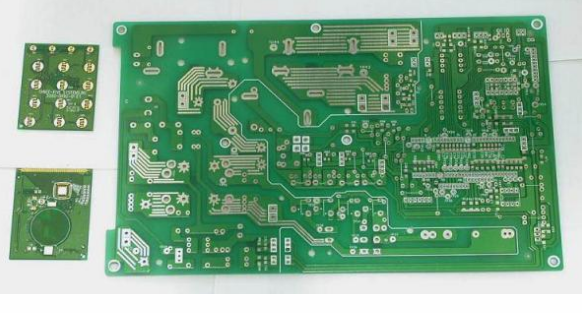This solution is only suitable for situations where the density of PCB components is not very high. PCB laminate has all the advantages of all laminates, and the ground planes of the top and bottom layers are relatively complete and can be used as a better shielding layer. It should be noted that the power layer should be close to the layer that is not the main component surface, because the plane of the bottom layer will be more complete.
For the six-layer board scheme, the distance between the power layer and the ground layer should be minimized to obtain good power and ground coupling. However, although the thickness of the board is 62mil and the layer spacing is reduced, it is not easy to control the spacing between the main power supply and the ground layer to be small. Therefore, we usually choose to follow the 20H rule and the mirror layer rule design when stacking.
, Eight-layer laminate
(1) This is not a good stacking method due to poor electromagnetic absorption and large power supply impedance. Its structure is as follows:
1.Signal 1 component surface, microstrip wiring layer
2. Signal 2 internal microstrip wiring layer, better wiring layer (X direction)
3.Ground

4. Signal 3 stripline routing layer, better routing layer (Y direction)
5.Signal 4 stripline routing layer
6.Power
7. Signal 5 internal microstrip wiring layer
8.Signal 6 microstrip trace layer
(2) It is a variant of the third PCB stacking method. Due to the addition of the reference layer, it has better EMI performance, and the characteristic impedance of each signal layer can be well controlled:
1.Signal 1 component surface, microstrip wiring layer, good wiring layer
2. Ground stratum, better electromagnetic wave absorption ability
3. Signal 2 stripline routing layer, good routing layer
4. Power power layer, forming excellent electromagnetic absorption with the ground layer below
5.Ground strata
6.Signal 3 stripline routing layer, good routing layer
7. Power stratum, with large power supply impedance
8.Signal 4 microstrip wiring layer, good wiring layer
(3) The best stacking method, due to the use of multi-layer ground reference planes, it has very good geomagnetic absorption capacity.
1.Signal 1 component surface, microstrip wiring layer, good wiring layer
2. Ground stratum, better electromagnetic wave absorption ability
3. Signal 2 stripline routing layer, good routing layer
4. Power power layer, forming excellent electromagnetic absorption with the ground layer below
5.Ground strata
6.Signal 3 stripline routing layer, good routing layer
7. Ground stratum, better electromagnetic wave absorption ability
8.Signal 4 microstrip wiring layer, good wiring layer
How to choose how many layers of boards are used for PCB design and what method of PCB stacking is used depends on many factors such as the number of signal networks on the board, device density, PIN density, signal frequency, board size and so on. We must consider these factors comprehensively. For the more signal networks, the greater the device density, the greater the PIN density, and the higher the signal frequency, the PCB multi-layer board design should be used as much as possible. To get good EMI performance, it is best to ensure that each signal layer has its own reference layer.